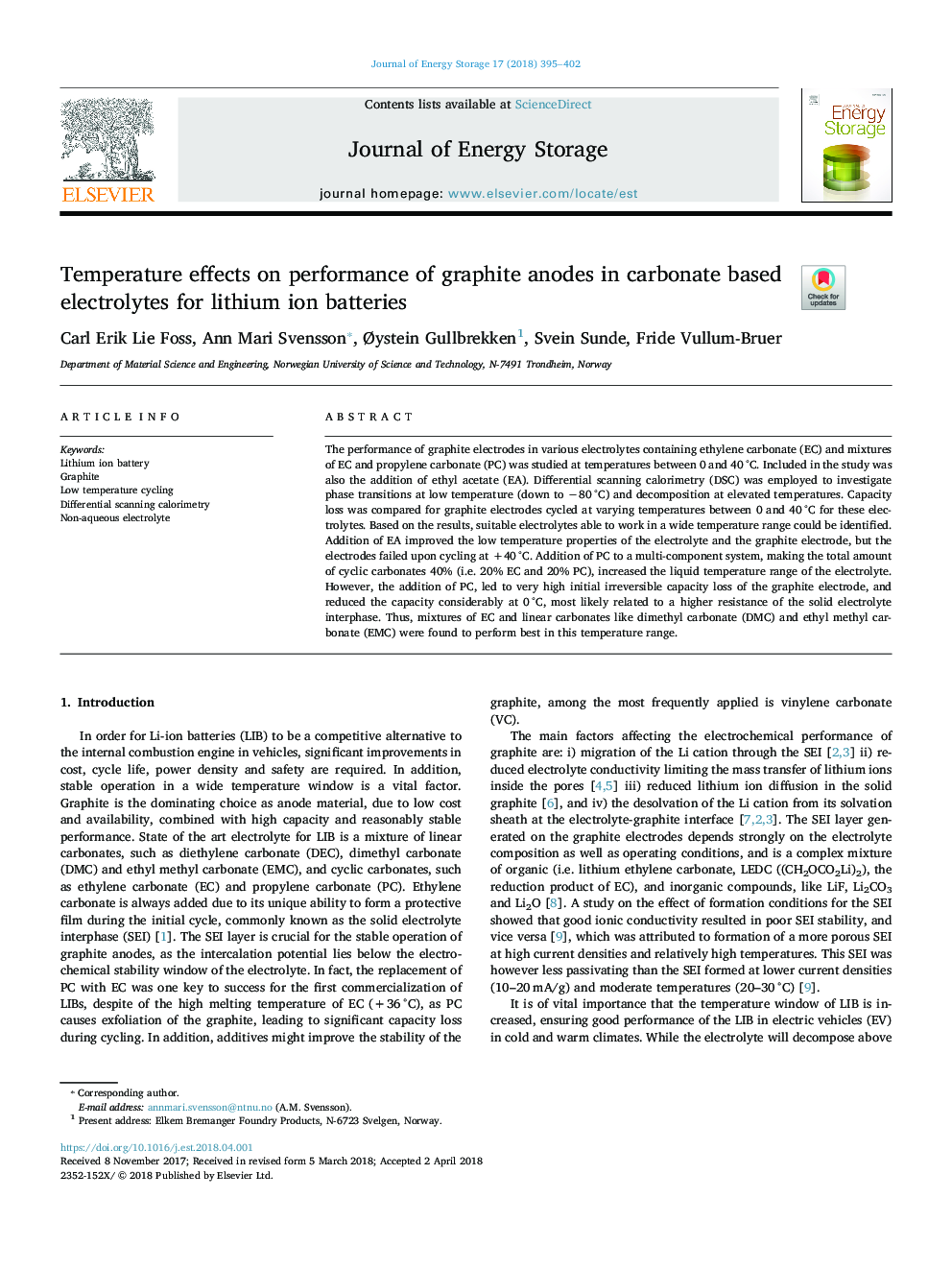| Article ID | Journal | Published Year | Pages | File Type |
|---|---|---|---|---|
| 7540035 | Journal of Energy Storage | 2018 | 8 Pages |
Abstract
The performance of graphite electrodes in various electrolytes containing ethylene carbonate (EC) and mixtures of EC and propylene carbonate (PC) was studied at temperatures between 0 and 40â¯Â°C. Included in the study was also the addition of ethyl acetate (EA). Differential scanning calorimetry (DSC) was employed to investigate phase transitions at low temperature (down to â80â¯Â°C) and decomposition at elevated temperatures. Capacity loss was compared for graphite electrodes cycled at varying temperatures between 0 and 40â¯Â°C for these electrolytes. Based on the results, suitable electrolytes able to work in a wide temperature range could be identified. Addition of EA improved the low temperature properties of the electrolyte and the graphite electrode, but the electrodes failed upon cycling at +40â¯Â°C. Addition of PC to a multi-component system, making the total amount of cyclic carbonates 40% (i.e. 20% EC and 20% PC), increased the liquid temperature range of the electrolyte. However, the addition of PC, led to very high initial irreversible capacity loss of the graphite electrode, and reduced the capacity considerably at 0â¯Â°C, most likely related to a higher resistance of the solid electrolyte interphase. Thus, mixtures of EC and linear carbonates like dimethyl carbonate (DMC) and ethyl methyl carbonate (EMC) were found to perform best in this temperature range.
Related Topics
Physical Sciences and Engineering
Energy
Energy (General)
Authors
Carl Erik Lie Foss, Ann Mari Svensson, Ãystein Gullbrekken, Svein Sunde, Fride Vullum-Bruer,
